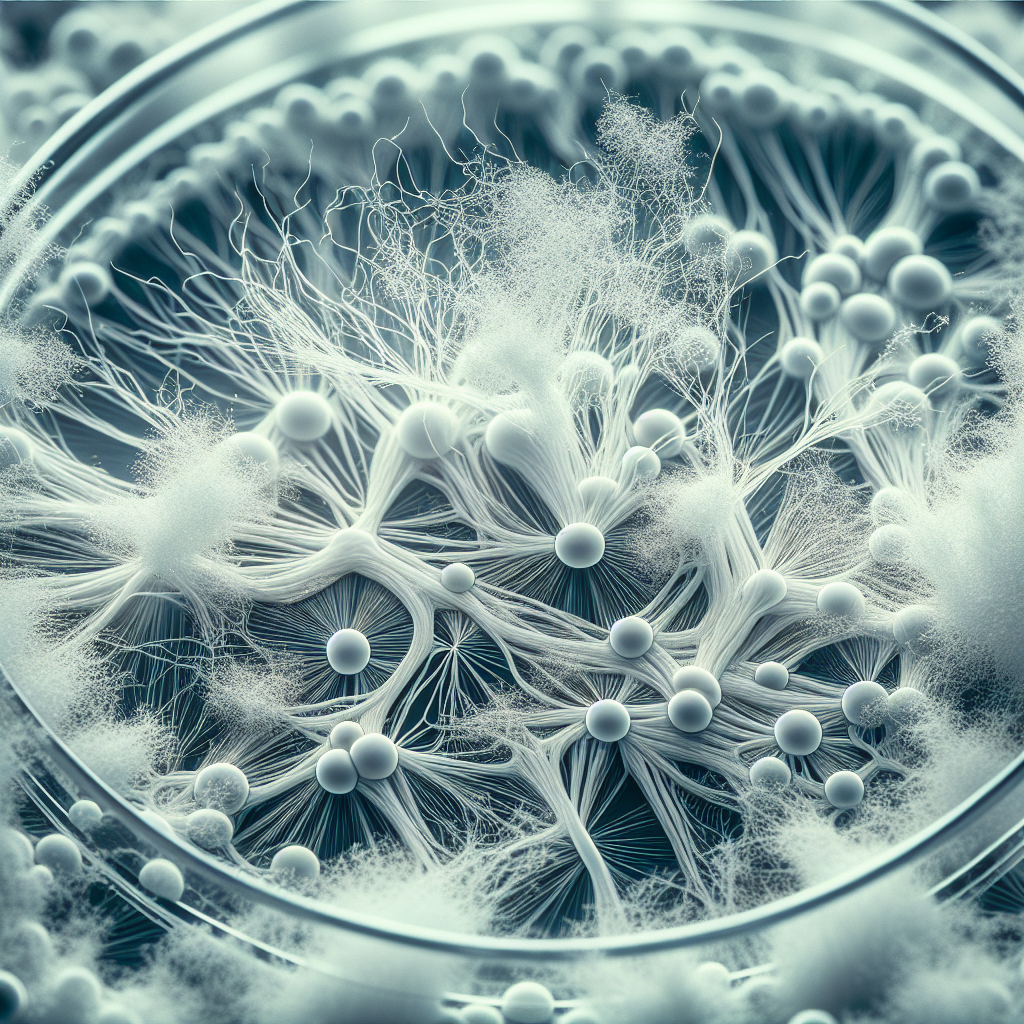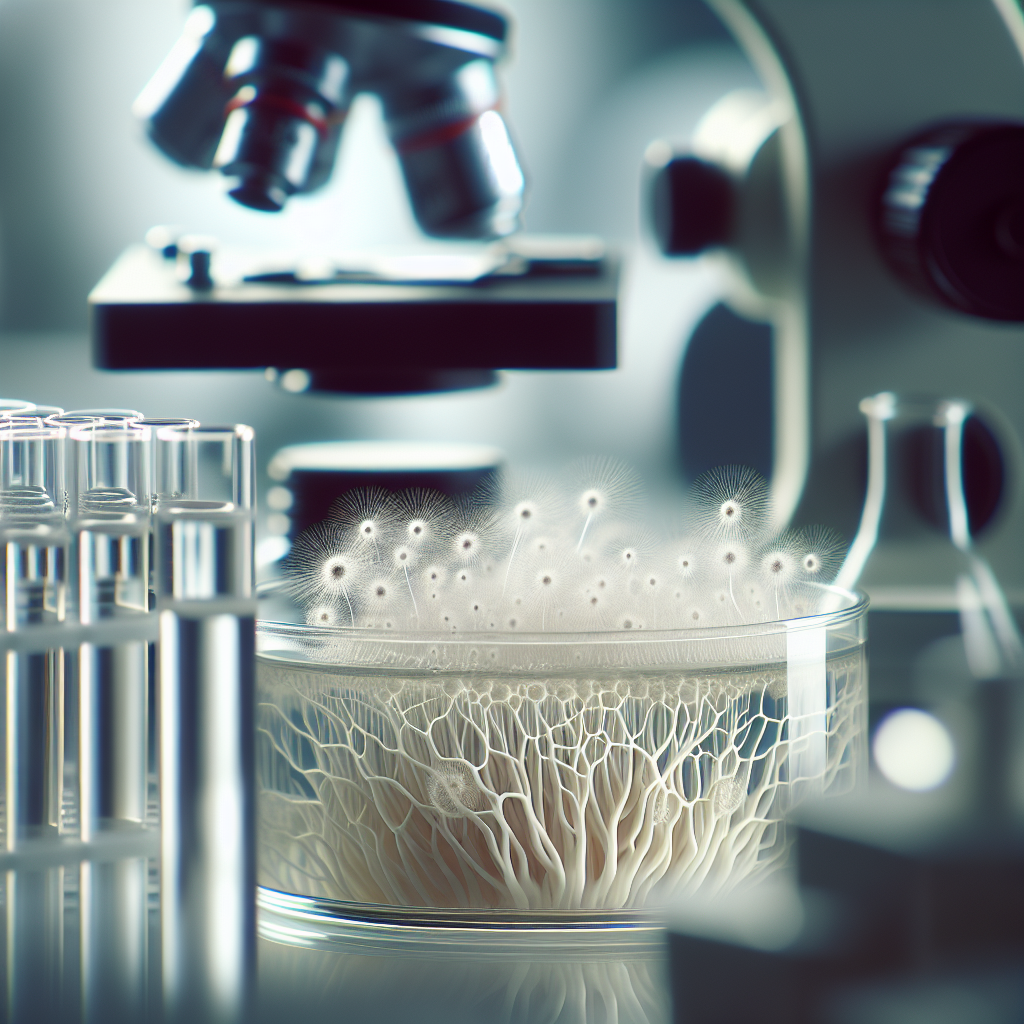“Advanced Techniques in Liquid Culture Mycelium Propagation” guides you through the intricate process and sophisticated methods involved in propagating mycelium, the vegetative part of a fungus, in a liquid culture. As you explore the pages of this informative and detailed article, your expertise will evolve, offering you a profound understanding of the technicalities involved in this significant sector of microbiology. Learn about the influence of specific liquid mediums, the role of environmental controls, and the significance of sterilization in ensuring successful, uncontaminated propagation. Mastering these advanced techniques can enhance your efficiency and accuracy, bringing the notions of fungal biology out from under the microscope and into your practical application. This knowledge can benefit not only professionals in microbiology, mycology and related fields, but anyone interested in improving their theoretical and practical understanding of this fascinating, yet often overlooked, area of science.
Understanding Liquid Culture Mycelium Propagation
In the field of mycology, having a comprehensive understanding of different propagation techniques is crucial in drawing out the enormous potential of fungi. One such technique that stands out due to its efficiency and relative simplicity is liquid culture mycelium propagation.
Definition of Liquid Culture Mycelium
Liquid culture mycelium refers to the growth of mycelium, the vegetative part of a fungus or fungus-like bacterial colony, in liquid nutrients. The liquid nutrients, or substrate, provide an environment conducive not only for the mushroom to grow but also to multiply. The propagation occurs when a small amount of fungal tissue is introduced to the nutrient-rich liquid medium and allowed to multiply, resulting in a fibrous network referred to as mycelium.
The Role of Liquid Culture in Mycelium Propagation
Liquid culture plays a pivotal role in mycelium propagation. It provides the fungus with an absorbable form of nutrients for rapid mycelial expansion. It also facilitates the exchange of genetic material across organism colonies, thereby leading to rich genetic diversity. This process aids in resistance against diseases, increases mushroom’s adaptability, and optimizes its metabolic potential.
Understanding the General Concept of Liquid Culture Mycelium Propagation
The general concept revolves around creating a conducive environment for the mycelium to thrive. It involves several stages, ranging from sterilization, inoculation of fungi in the liquid medium, incubation to colonization, and finally, fruiting. Overall, the objective of liquid culture mycelium propagation is to generate a high volume of mycelium for large scale cultivation within a short period.
Basic Requirements for Liquid Culture Mycelium Propagation
The success of liquid culture mycelium propagation hinges on several factors, including the cultivation environment, growth medium choice, temperature, pH levels, and light conditions.
Importance of a Sterile Environment
The sterility of the environment is paramount during the entire process. It prevents contamination, which could inhibit the growth of the mycelium and intro duce potential health risks.
Appropriate Growth Medium Choice
The right growth medium is required to provide the necessary nutrients for growth. Some common choices include malt extract, dextrose, and potato dextrose broth. The most suitable choice can vary depending on the type of mushroom being grown.
Optimal Temperature Conditions
Maintaining the optimal temperature is vital for successful propagation. Different species have different temperature requirements; however, most typically thrive between 23-27 degrees Celsius.
Maintenance of Correct pH Levels
Just like other living organisms, mushrooms also require a specific pH range to grow properly. Most species prefer slightly acidic to neutral conditions.
Suitable Light Conditions
Although mushrooms are not photosynthetic, they still need certain light conditions to trigger fruiting.

Stages in Liquid Culture Mycelium Propagation
Several essential stages bring about successful liquid culture mycelium propagation: inoculation, incubation, colonization, and finally, fruiting.
Inoculation of the Substrate
This stage involves introducing the mushroom ‘spores’ or ‘spawn’ into the nutrient-rich liquid medium. The introduction should be carried out in a sterile environment to avoid contamination.
Incubation and Colonization
After inoculation, the culture is allowed to incubate at an appropriate temperature until colonization is complete, meaning the mycelium has fully colonized the substrate.
Fruiting and Harvest
Once full colonization is achieved, the conditions are adjusted to trigger fruiting. When the mushroom fruits are mature, they are harvested.
Advanced Techniques in Starting Liquid Cultures
Contrary to basic propagation methods, there exist some advanced techniques that can optimize the efficiency and effectiveness of starting liquid cultures.
Benefits of Using Liquid Cultures
Liquid cultures offer numerous benefits, including rapid colonization, the potential for large-scale production, and the ability to store cultures for future use.
Using Spore Syringes
The use of spore syringes is an advanced technique for introducing spores into the growth medium. The method allows for precise distribution, thereby reducing the risk of contamination.
Preparing Grain Spawn for Mycelium Propagation
Grain spawn preparation is another advanced technique in propagation. It involves using sterilized grains as a substrate into which the mycelium is introduced.

Advanced Techniques in Inoculating Your Liquid Culture
Once your liquid culture medium is prepared and sterilized, the inoculation process can begin. Advanced techniques in this phase involve carefully introducing the spores or spawn to the medium.
Procedure for Injecting Spore Syringe
The process of injecting a spore syringe is crucial in preventing contamination. Spores should be injected directly into the nutrient-rich liquid medium in a sterile environment.
Avoiding Contamination During Inoculation
To avoid contamination, it’s essential to sterilize all tools and work in a clean environment. Using a spore syringe can also decrease the chances of contamination.
Transfer of Live Mycelium to the Liquid Culture Medium
Transfer of live mycelium can also be used instead of spores for inoculation. This method speeds up the colonization process as it bypasses the need for spores to germinate.
Advanced Techniques in Incubation and Colonization
Incubation and colonization require a careful balance of the right conditions to ensure the successful growth of mycelium.
Optimum Temperatures for Mycelium Growth
Mycelium prefers temperatures between 23-27 degrees Celsius. To maintain this temperature range, you can use thermostatically controlled heaters or heat mats.
The Importance of a Dark Environment during Colonization
Although light isn’t harmful at this stage, mostly it’s recommended for the colonization phase to happen in a dark environment as excessive light can trigger premature pinning.
Length of Incubation Period
The length of the colonization period can vary depending on the species and conditions. On average, it takes two to four weeks.
Advanced Techniques in Fruiting and Harvesting Mycelium
Fruiting and harvesting are the final stages in mycelium propagation. Understanding the advanced techniques in these stages is key to optimizing your yields.
Understanding Pinning and Fruiting Conditions
Pinning marks the start of fruiting. It is triggered by changes in environmental conditions such as temperature, humidity, and light.
How to Induce Fruiting of Mycelium
Fruiting can be induced by manipulating environmental factors such as increasing fresh air exchange, introducing light, and lowering temperatures.
When and How to Harvest Mycelium
Harvesting should happen when the mushroom fruits are fully developed. This varies between species, but it’s usually characterized by the mushroom’s veil breaking.
Troubleshooting Common Problems in Liquid Culture Mycelium Propagation
Although mycelium propagation is relatively straightforward, certain problems may arise.
Dealing with Contamination
Contamination can halt mycelium growth and lead to failure in propagation. Sterility is key in preventing this problem.
Addressing Slow Growth Rates
Slow growth rates might be due to inappropriate conditions such as temperature and pH. Ensuring optimal conditions boosts the growth rate.
Resolving the Issue of no Fruiting
Failure to fruit might be due to inadequate light, airflow, or incorrect temperature. Fine-tuning these conditions can encourage fruiting.
Best Practices in Liquid Culture Mycelium Propagation
Successful mycelium propagation hinges on adhering to the best practices at every stage of the process.
Observing Strict Sterility
This cannot be overemphasized. Every step should be carried out in a clean, sterile environment using sterilized tools.
Regular Checking and Monitoring
Regularly check your cultures to ensure ideal conditions are maintained and to identify and resolve any issues promptly.
Proper Nourishment of the Mycelium
Choose a nutritious substrate and consider adding a supplement to further enhance growth.
Maintaining Ideal Environmental Conditions
Maintain optimal temperature, humidity, and light conditions for the specific mushroom species you are cultivating.
Future of Liquid Culture Mycelium Propagation
As the techniques continue to evolve, the future of mycelium propagation is promising.
Advancements in Mycelium Propagation Techniques
Technological advancements have led to new techniques in mycelium propagation, potentially increasing yields and reducing contamination.
Role of Technology in Liquid Culture Mycelium Propagation
Technology is playing a significant role in improving liquid culture mycelium propagation techniques. Modern devices allow for better temperature and humidity control and automated systems can enhance efficiency and yields.
Sustainability and Potential Impact on the Environment
Mycelium propagation has significant potential for sustainable alternatives in industries such as packaging, textile, and food. Continued advancements in these techniques could play a significant role in mitigating environmental challenges associated with conventional materials.
In conclusion, liquid culture mycelium propagation is a revolutionary technique in mycology, paving the way for better understanding, growth, and utilization of mushrooms. With the advancement in technology and understanding of fungal biology, the future of mycelium propagation is limitless.
